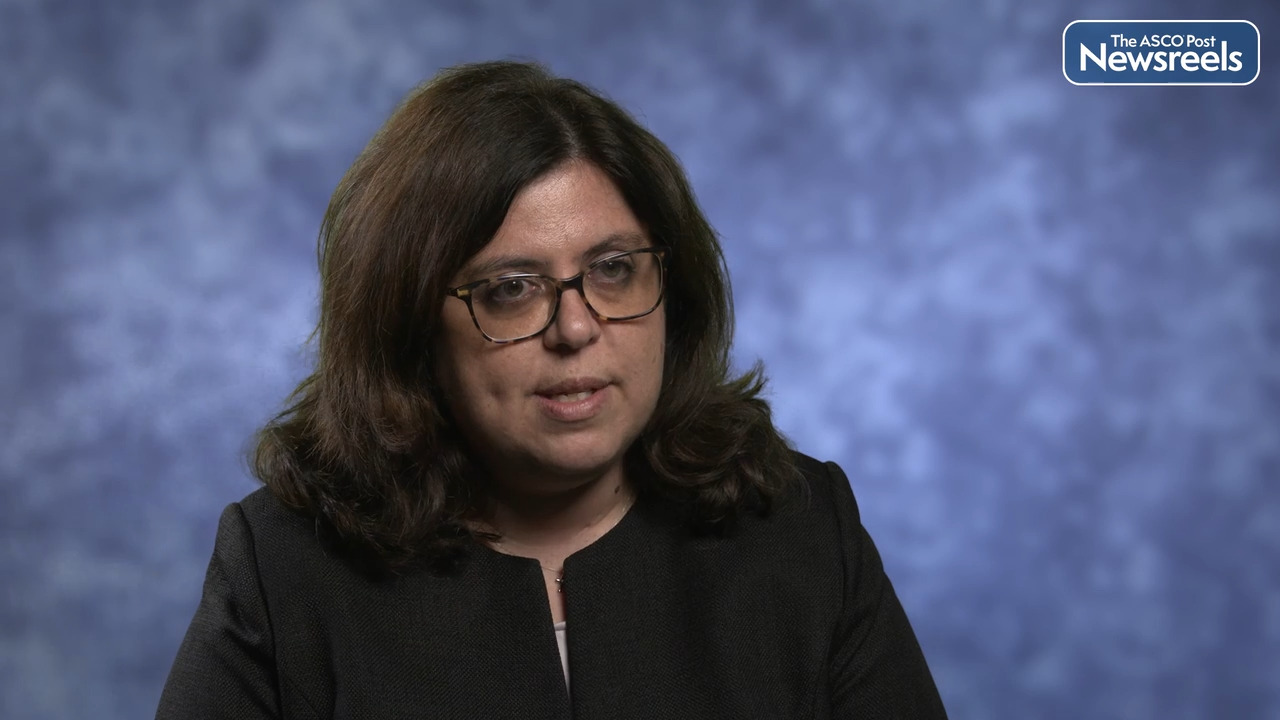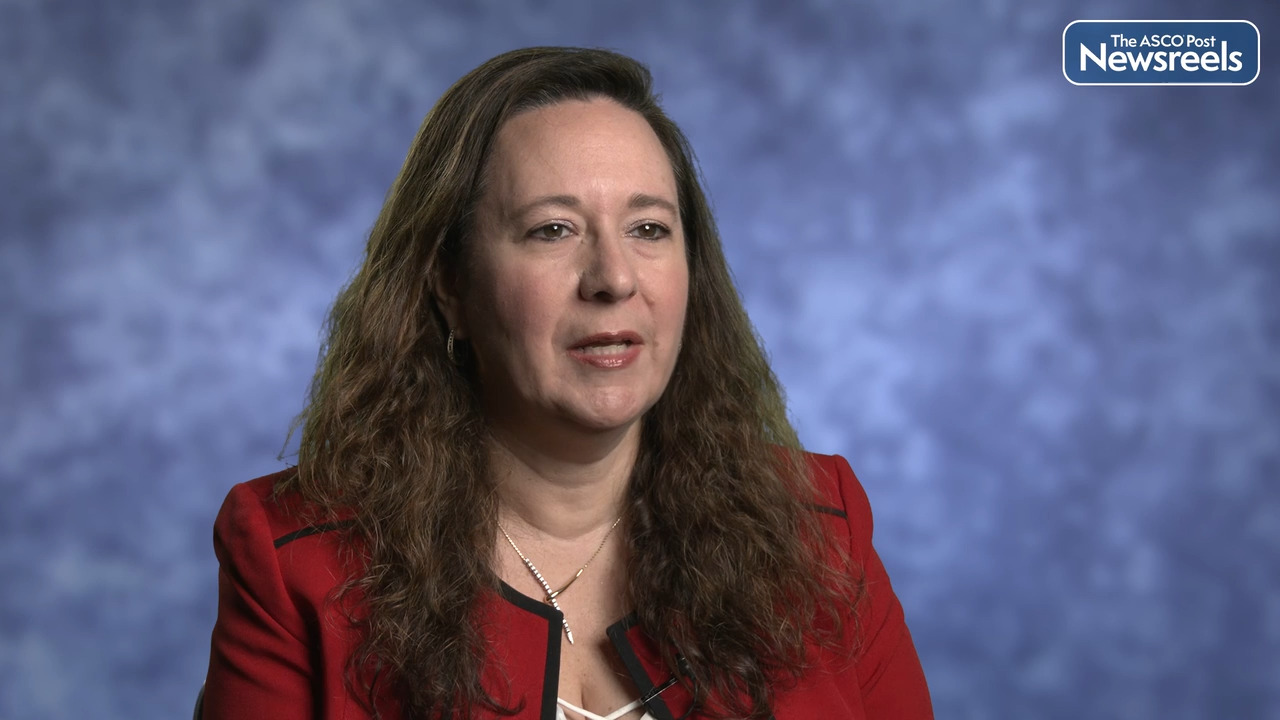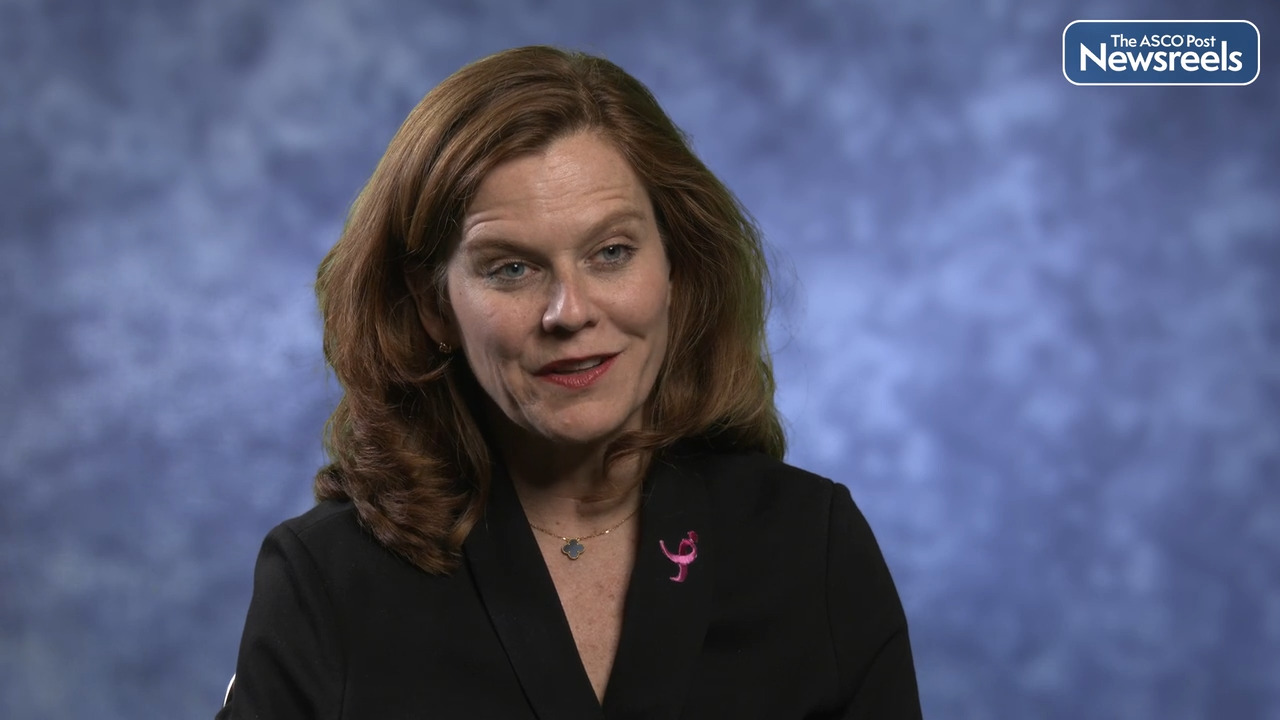Transcript
Disclaimer: This video transcript has not been proofread or edited and may contain errors.
At this meeting I presented a 12-year update of the results of the TAILORx trial. TAILORx was a phase three trial that integrated the 21 gene recurrent score assay into clinical decision-making for patients with estrogen receptor positive, HER2-negative node negative breast cancer. For patients who had a low recurrent score of zero to 10 or high recurrent score of 26 to a 100, they were assigned to treatment with either endocrine therapy alone or chemotherapy plus endocrine therapy respectively based on information that we had at the time that that was the appropriate choice for them.
For the two-thirds of patients who had a recurrent score in the mid-range of 11 to 25, they were randomized to either chemotherapy plus endocrine therapy, the standard arm or endocrine therapy alone, which we considered the experimental arm. All of these patients met NCCN guidelines for either recommending or considering chemotherapy.
At the time of the original analysis after a median followup of seven and a half years, we conclusively demonstrated that endocrine therapy was non-inferior to chemotherapy plus endocrine therapy. At this meeting, we reported a 12-year event rates with a median follow up of 11 years. In other words, three and a half more years of follow up. And we came to the following conclusions after analyzing the data.
First of all, our primary conclusion of non-inferiority of endocrine therapy compared with chemo endocrine therapy did not change, indicating that we can effectively spare chemotherapy in the majority of patients with early stage breast cancer. Secondly, for patients who were 50 or under and premenopausal at the time of diagnosis, some of those patients did benefit from chemotherapy, namely those who had a recurrent score of 21 to 25, or those with a recurrent score of 16 to 20 and high clinical risk features.
At this analysis, we found that those trends continued, although the largest difference was in those patients who had the highest recurrent score of 21 to 25 within this range. And additionally, we did find that with continued follow-up relapses continued to occur, and in fact, late relapses occurring more than five years after diagnosis, which is a typical course of adjuvant endocrine therapy, now exceeded early relapse.
And finally, when we examined outcomes by race and ethnicity, we found that Black women had a higher recurrence rate despite comparable clinical characteristics, recurrence scores, treatment administration, insurance status, and other social determinants of health. However, we specifically found that Black women were at increased risk for early recurrence within the first five years of diagnosis.
The take home clinical implications of this are that with continued follow up, the main conclusions derived from the TAILORx trial remain unchanged. That chemotherapy can be effectively spared in the majority of women with ER positive, HER2-negative breast cancer, who have a recurrent score of zero to 10 or have a recurrent score of 11 to 25, including all postmenopausal women with a score of 11 to 25 who are node negative, and in addition, women 50 or under who have a recurrent score of up to 15 or 16 to 20 and low clinical risk.
There is a follow-up study that is planned by another group, the NRG, that will address the areas where equipoise exists or continues to exist after TAILORx. That trial will be coordinated by the NRG. It will be an NCI sponsored trial where women with one to three positive nodes in a recurrent score of zero to 25, or a woman with node negative breast cancer, and this of course is estrogen receptor positive, HER2-negative breast cancer and a recurrent score of 21 to 25 or 16 to 20 and high clinical risk will be randomized to receive either chemotherapy plus ovarian function suppression and an aromatase inhibitor or ovarian function suppression and an aromatase inhibitor without chemotherapy.
The reason for doing this trial is because it's believed that the chemotherapy benefit that was seen in premenopausal women, 50 or under in TAILORx may have been driven entirely by an effect of chemotherapy in inducing early menopause. A similar effect was also seen in the RxPONDER trial in patients with one to three positive nodes, which provides a basis for addressing this lingering question.





